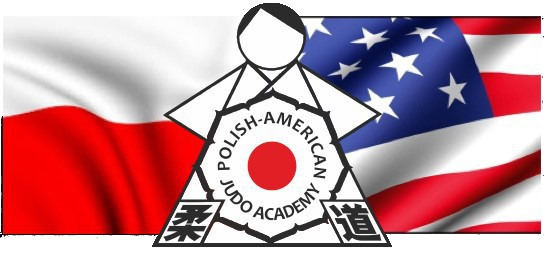Judo

Step by step
1) Invitation – We invite you to a non-binding judo training.
2) Online registration https://zapisy.activenow.pl/polish-american-judo-academy/
3) Participation in judo training.
4) If you want to continue your adventure with sport, you are required to complete a set of documents and read our regulations.
5) The beginning of an adventure with sport – regular participation in training.
MEMBERSHIP CONTRIBUTIONS PAID ON AN ACCOUNT UP TO 10th. OF EACH MONTH
(please make payments in a given month separately for each Club member)
57 2490 0005 0000 4530 3657 2324
In the title: NAME, SURNAME, MONTH, YEAR
(e.g. JAN KOWALSKI, JANUARY 2020).
Our club is a sports association (non-governmental organization), the activity of which is based on membership fees. Contributions distinguish us from commercial sports clubs, which base their activities mainly on the provision of services. The main goal of the club is the promotion of sport, education through sport, and training of players. The club has a pro-family policy, so it is worth paying attention to family discounts that apply to family members.
Apart from the physical aspect of children’s development, we pay special attention to:
- developing positive personality traits.
- shaping correct social attitudes towards others.
- creating a sense of identity with the practiced sport.
- tradition and etiquette in judo school.
- the discipline and values of our club.
- cooperation in a group.
Judo is based on three main principles:
“Self Improvement”. According to this principle, each practitioner strives to master the technical elements perfectly, looking for the most effective ways to use physical and spiritual forces. He is always prudent and has common sense , and never uses his advantage unnecessarily.
“Give way and you will win” This is the principle according to which the great strength of the opponent is opposed by cunning and common sense as well as technical skills. Each action of the opponent can be used to his advantage, and each force can be turned towards the opponent. The basics of physics are used here, e.g. when the opponent pushes you, pull him, and when he pulls, push him. This principle is best described in an old Japanese saying: “A storm breaks even strong oaks, only sways a flexible reed.”
“Maximum effect with minimum effort.” This principle is already taught to children, it is realized by teaching techniques, perfecting them to such a level of advancement that the movement does not require the use of one’s own strength, and fully uses the opponent’s strength directed at the practitioner.
There are the following groups of techniques in judo:
Nage waza (throwing techniques) – covering all throws, divided into smaller groups depending on the movement performed. Katame waza (gripping techniques) – mainly including gripping techniques that immobilize the opponent on the mat. Shime waza (strangling techniques) – used until the opponent surrenders or is stopped by the referee. Kansetsu waza (leverage techniques) – exercised by applying pressure to the major joints of the arms.
Judo is one of the few combat sports that perfectly affects the proper development of all children’s motor skills. Judo classes also support the proper development of a child’s mental development. In children’s training, we pay special attention to the variety of exercises that form the basis of general preparation for sports. Training for the youngest is carried out in the form of fun, which is to bring children joy from the exercises they performed. During judo classes, the simplest forms of judo techniques are processed, which, as experience is gained, take on more complicated forms (used at further stages of training). The training system for young judo adepts is built comprehensively, taking into account exercises that shape all motor skills of children. Moreover, the task of our trainer is to shape the personality of young athletes. Judo greatly influences the development of correct social attitudes, teaches work and self-discipline. Our goal is to provide children with an alternative way of spending their free time, and to encourage them to practice this Olympic sport for many years. Our experienced trainers will make every effort to ensure that your children get as much smile and physical fitness as possible from the classes.
Contact
ul. Królowej Jadwigi 4
32-089 Biały Kościół


